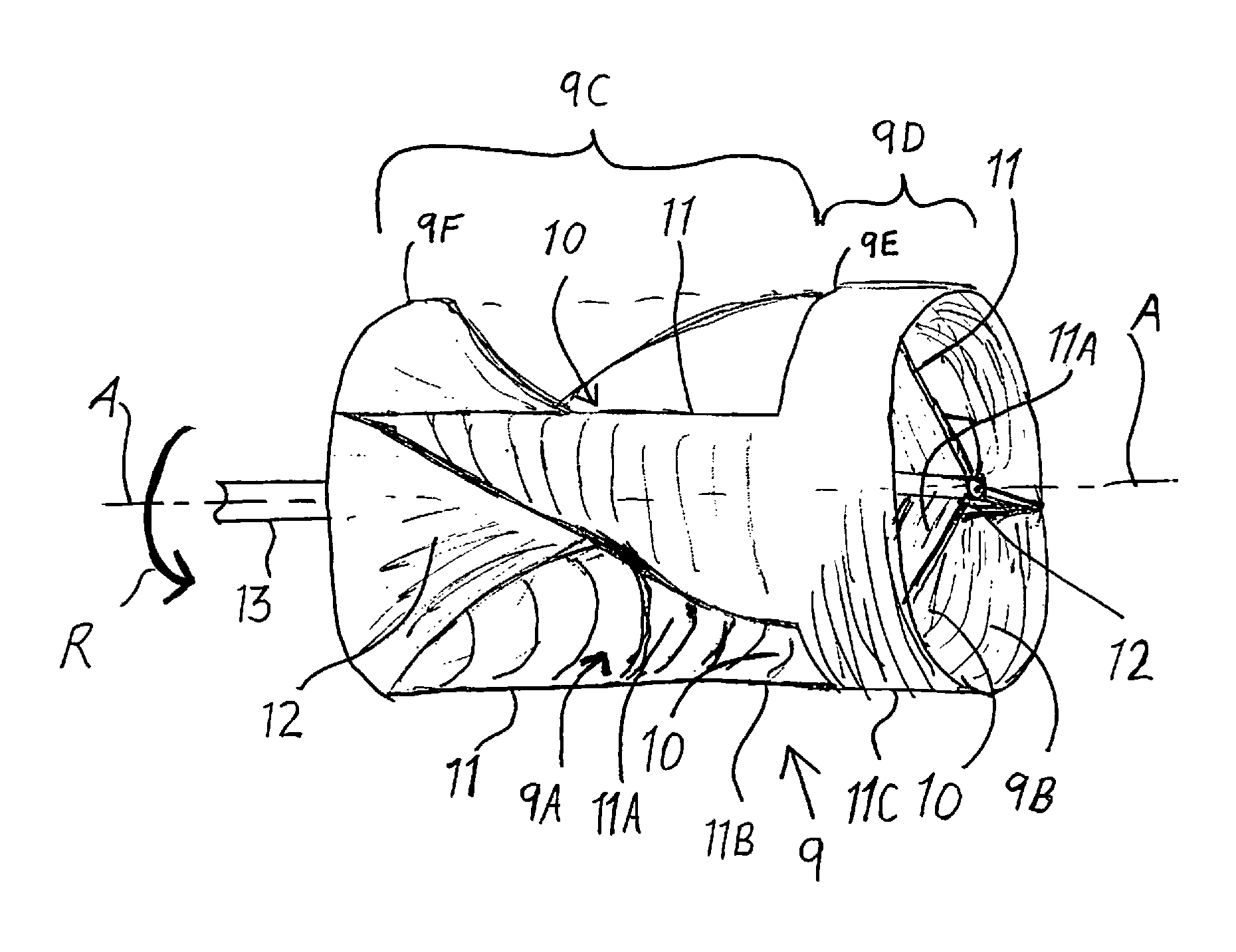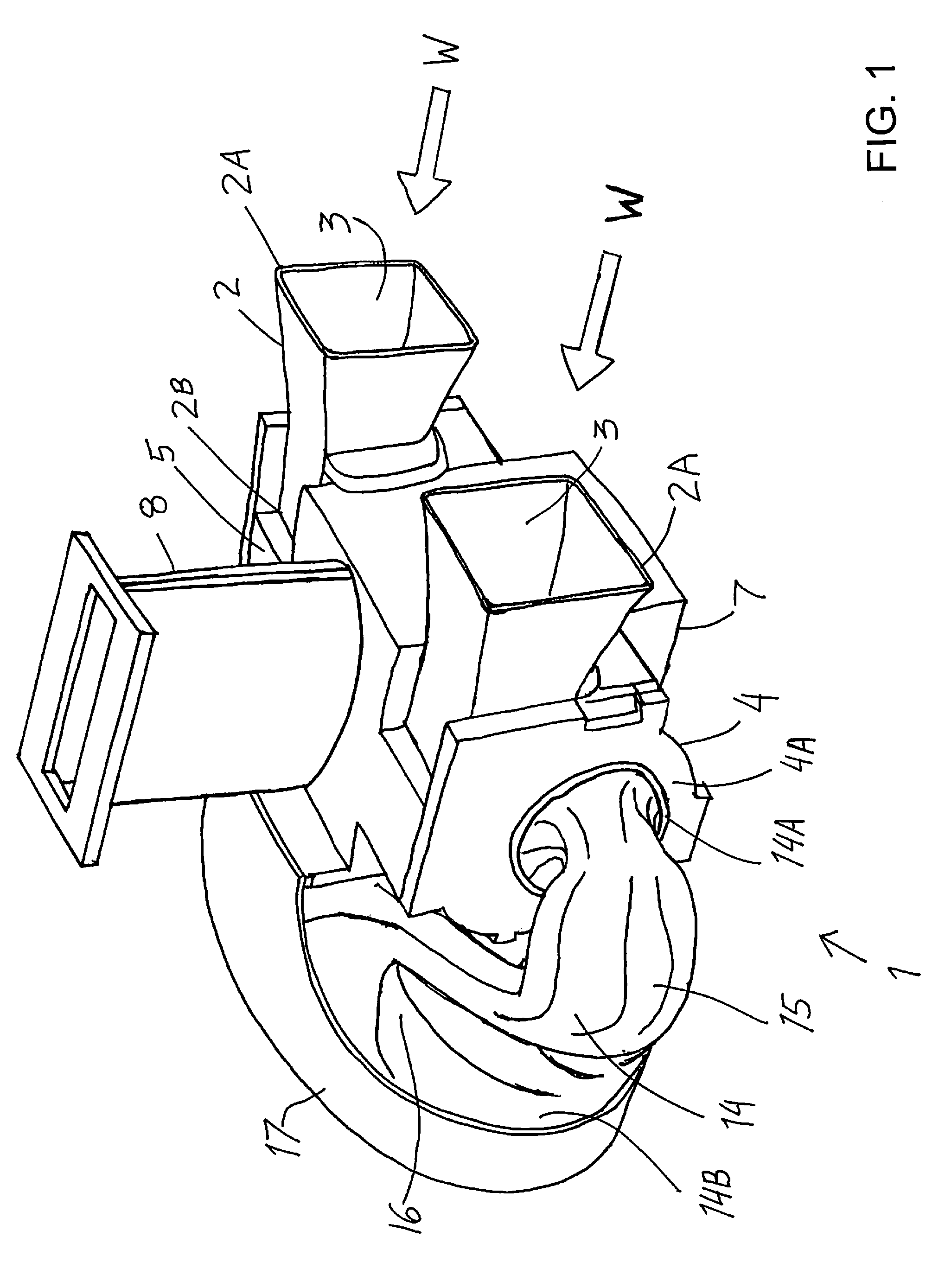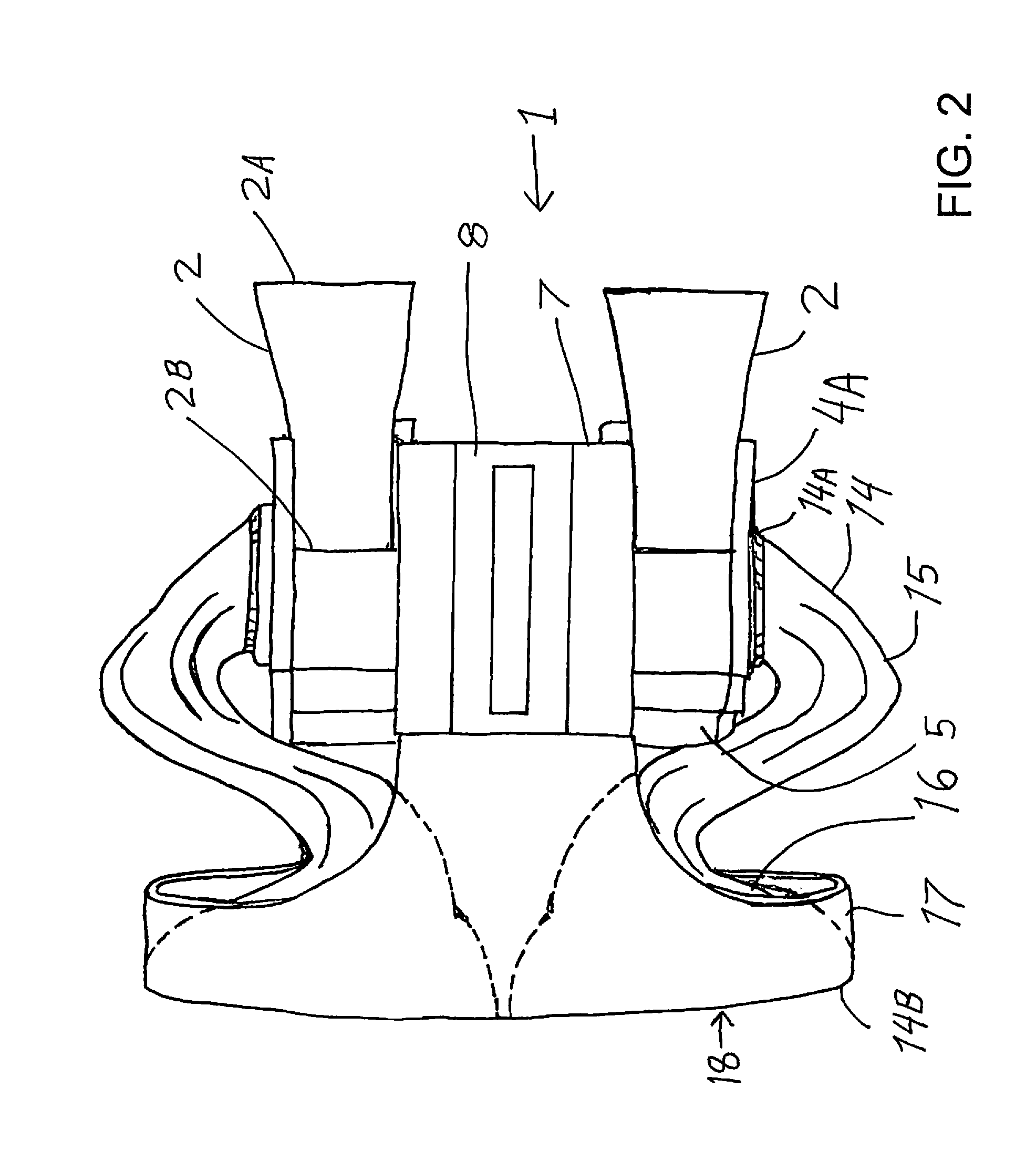Instream hydro power generator
a technology of hydropower generator and instream hydro power, which is applied in the direction of renewable energy generation, machines/engines, climate sustainability, etc., can solve the problems of increasing the complexity of the apparatus, requiring large rotor dimensions to extract any usable amount of power, and affecting the efficiency of the device, so as to reduce or minimize the effect of reducing or maximizing the transfer of power and smooth acceleration
- Summary
- Abstract
- Description
- Claims
- Application Information
AI Technical Summary
Benefits of technology
Problems solved by technology
Method used
Image
Examples
Embodiment Construction
[0046]FIGS. 1 to 5 schematically show the overall construction of an example embodiment of an instream hydro power generator apparatus 1 according to the present invention, which has been built as a prototype. The apparatus 1 is especially adapted and designed to be arranged instream, i.e. immersed in a flowing stream of water W, so as to encapture a portion of the flowing water and extract mechanical power from the encaptured flowing water. However, the invention is not limited to the use of flowing water as the fluid medium from which power is extracted, but rather the inventive teachings can also be applied to a turbine apparatus for extracting power from wind or steam or other flowing fluid media.
[0047]An example of such an instream installation involves the hydro power generator apparatus 1 being secured on a base or pedestal on the seabed in a location where the apparatus will be exposed to tidal flow of ocean water. Alternatively, the instream installation may involve the app...
PUM
| Property | Measurement | Unit |
|---|---|---|
| polar angle | aaaaa | aaaaa |
| polar angle | aaaaa | aaaaa |
| entry angle | aaaaa | aaaaa |
Abstract
Description
Claims
Application Information
 Login to View More
Login to View More - R&D
- Intellectual Property
- Life Sciences
- Materials
- Tech Scout
- Unparalleled Data Quality
- Higher Quality Content
- 60% Fewer Hallucinations
Browse by: Latest US Patents, China's latest patents, Technical Efficacy Thesaurus, Application Domain, Technology Topic, Popular Technical Reports.
© 2025 PatSnap. All rights reserved.Legal|Privacy policy|Modern Slavery Act Transparency Statement|Sitemap|About US| Contact US: help@patsnap.com



